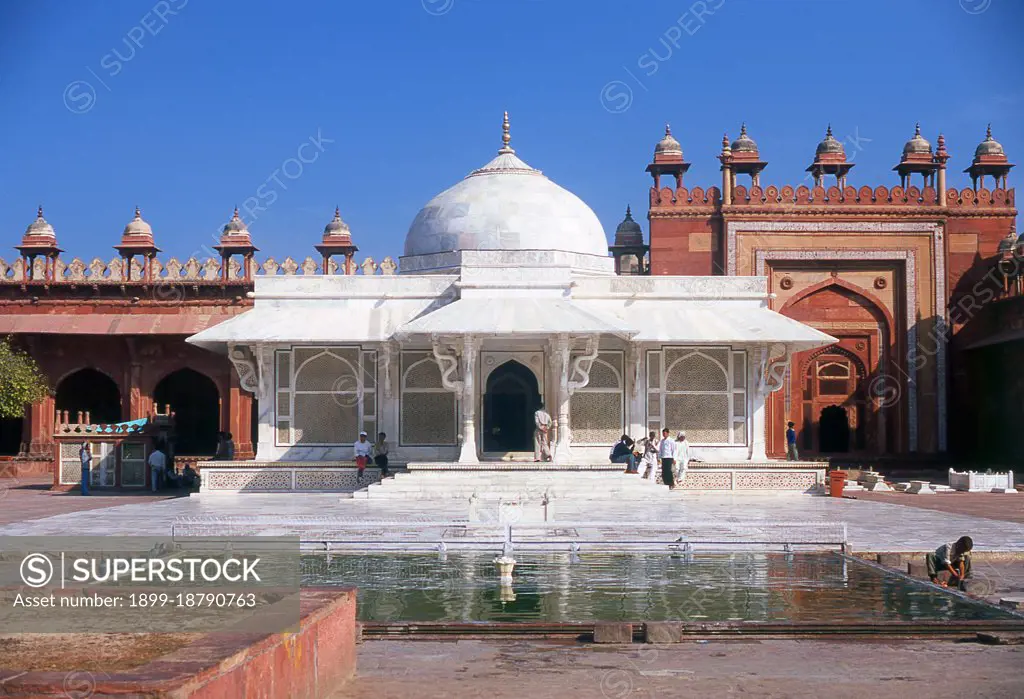Salim Chishti (1478 1572) was a Sufi saint of the Chishti Order during the Mughal Empire (1526 - 1757) in South Asia. Chishti's tomb was originally built with red sandstone but later converted into a beautiful marble mausoleum. Salim Chishti's Mazar (tomb) is in the middle of the Emperor's Courtyard at Fatehpur Sikri. The mausoleum was constructed by Akbar as a mark of his respect for the Sufi saint, who foretold the birth of his son, who was named Prince Salim after him and later succeeded Akbar to the throne of the Mughal Empire, as Jahangir. Fatehpur Sikri (the City of Victory) was built during the second half of the 16th century by the Emperor Akbar (r. 1556-1605). It was the capital of the Mughal Empire for 10 years.
SuperStock offers millions of photos, videos, and stock assets to creatives around the world. This image of Salim Chishti (1478 1572) was a Sufi saint of the Chishti Order during the Mughal Empire (1526 - 1757) in South Asia. Chishti's tomb was originally built with red sandstone but later converted into a beautiful marble mausoleum. Salim Chishti's Mazar (tomb) is in the middle of the Emperor's Courtyard at Fatehpur Sikri. The mausoleum was constructed by Akbar as a mark of his respect for the Sufi saint, who foretold the birth of his son, who was named Prince Salim after him and later succeeded Akbar to the throne of the Mughal Empire, as Jahangir. Fatehpur Sikri (the City of Victory) was built during the second half of the 16th century by the Emperor Akbar (r. 1556-1605). It was the capital of the Mughal Empire for 10 years. by Pictures From History/Universal Images is available for licensing today.
DETAILS
Image Number: 1899-18790763Rights ManagedCredit Line:Pictures From History/Universal Images/SuperStockCollection:Universal Images Contributor:Pictures From History Model Release:NoProperty Release:NoResolution:5095×3480
Free Research
Can't find the usage you need?
We're here to help!
Phone:+1 866 236 0087
Email: help@superstock.com
or fill out a Contact Form
Research / License Request Form
Can't find the usage you need?
We're here to help!
Phone:
or fill out a Contact Form
Research / License Request Form
Retouching Services
Our MediaMagnet division offers comprehensive retouching services at great rates. For a free quote, please send us an e-mail and we'll get back to you promptly.
Email: Retouching Service
Our MediaMagnet division offers comprehensive retouching services at great rates. For a free quote, please send us an e-mail and we'll get back to you promptly.
Email: Retouching Service
